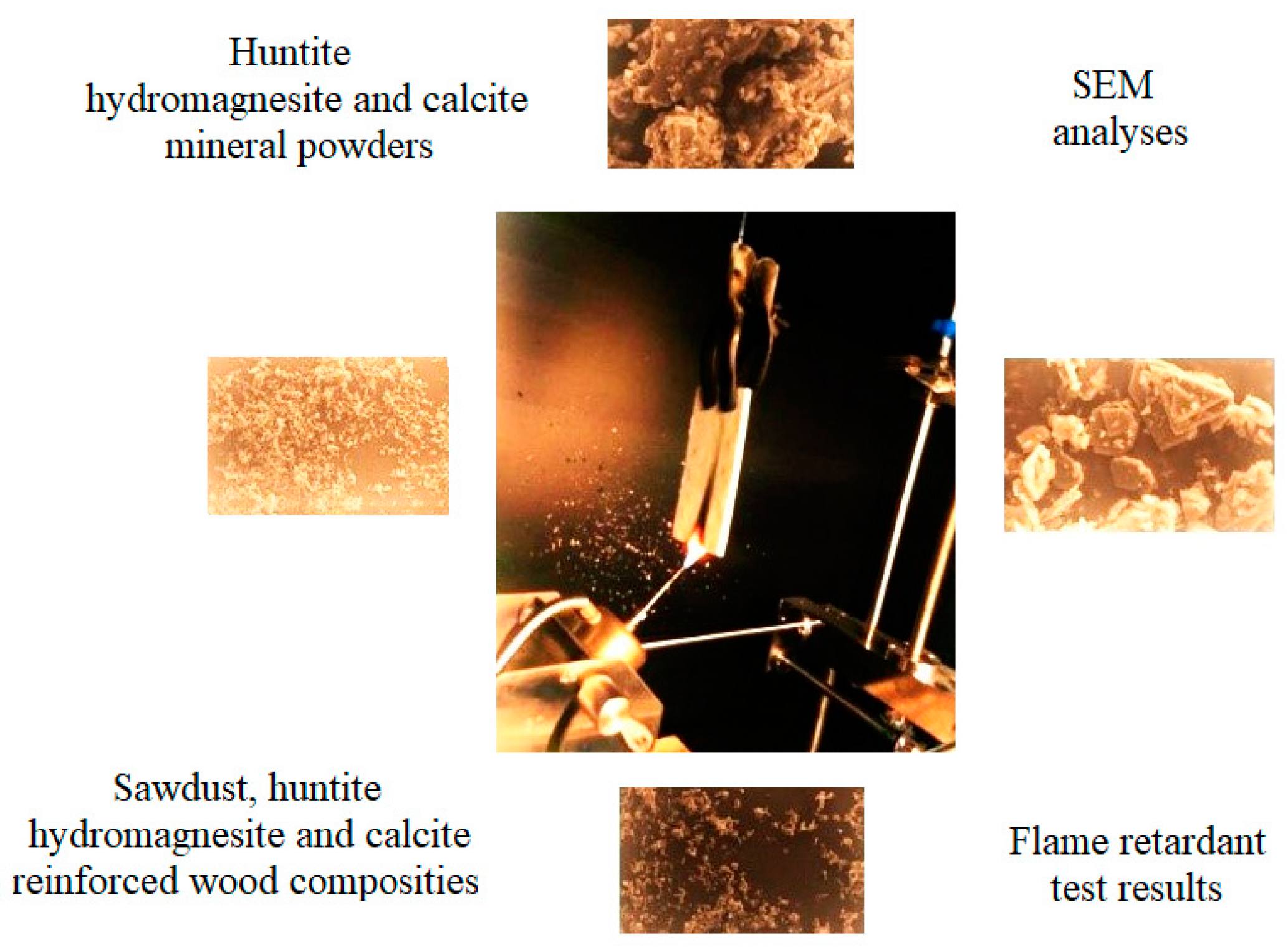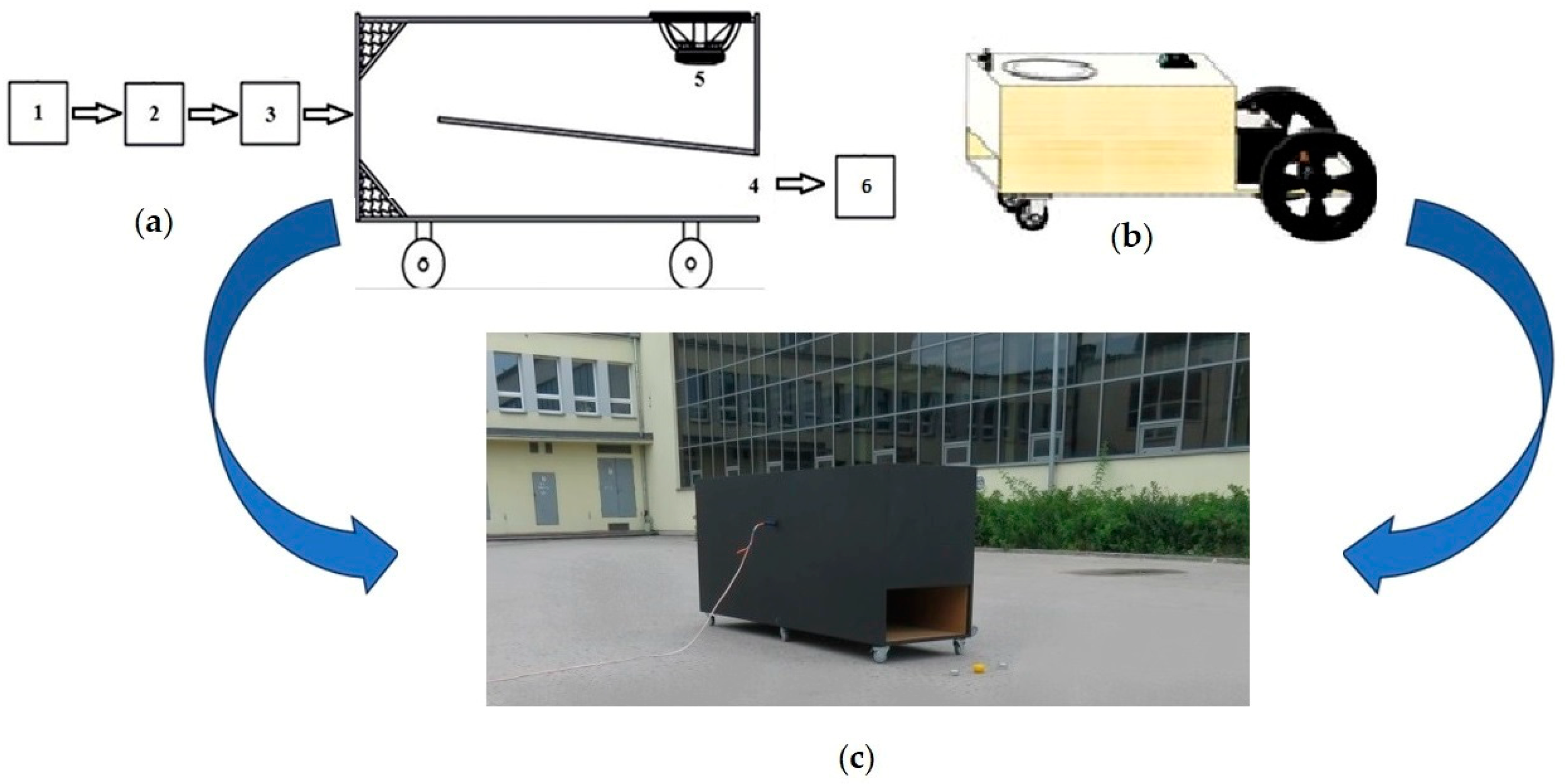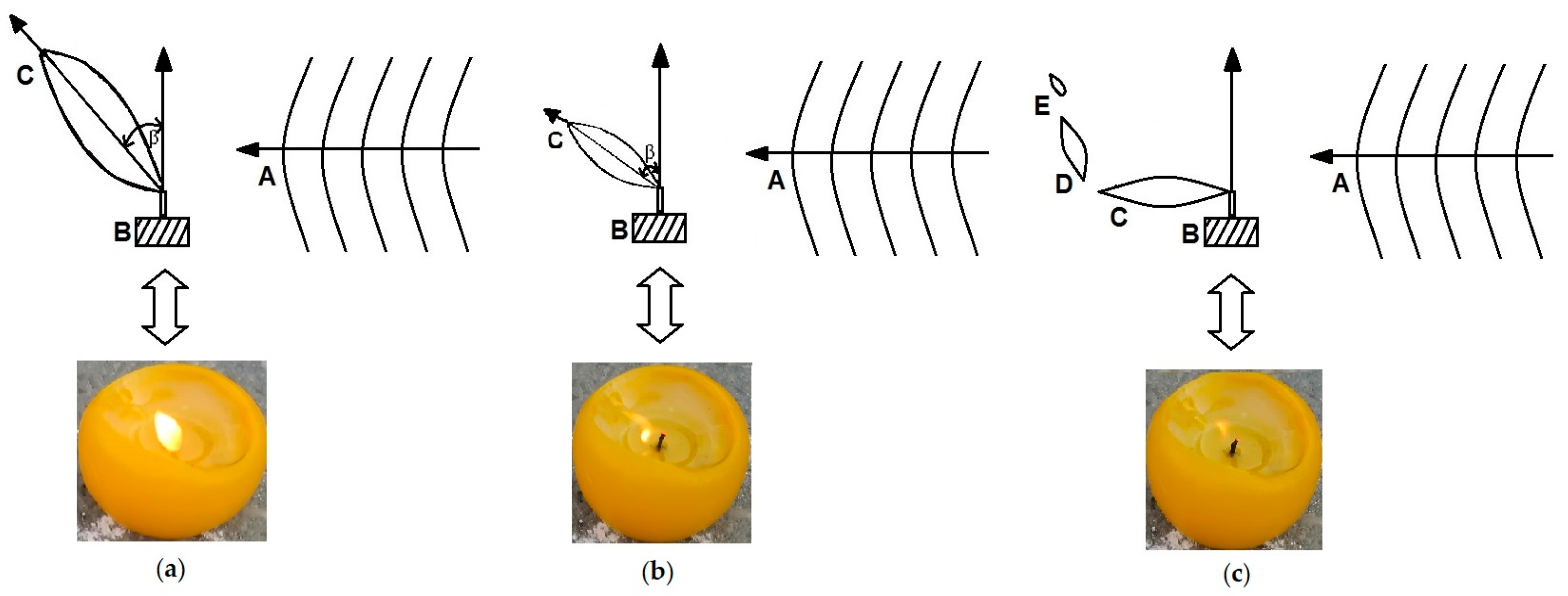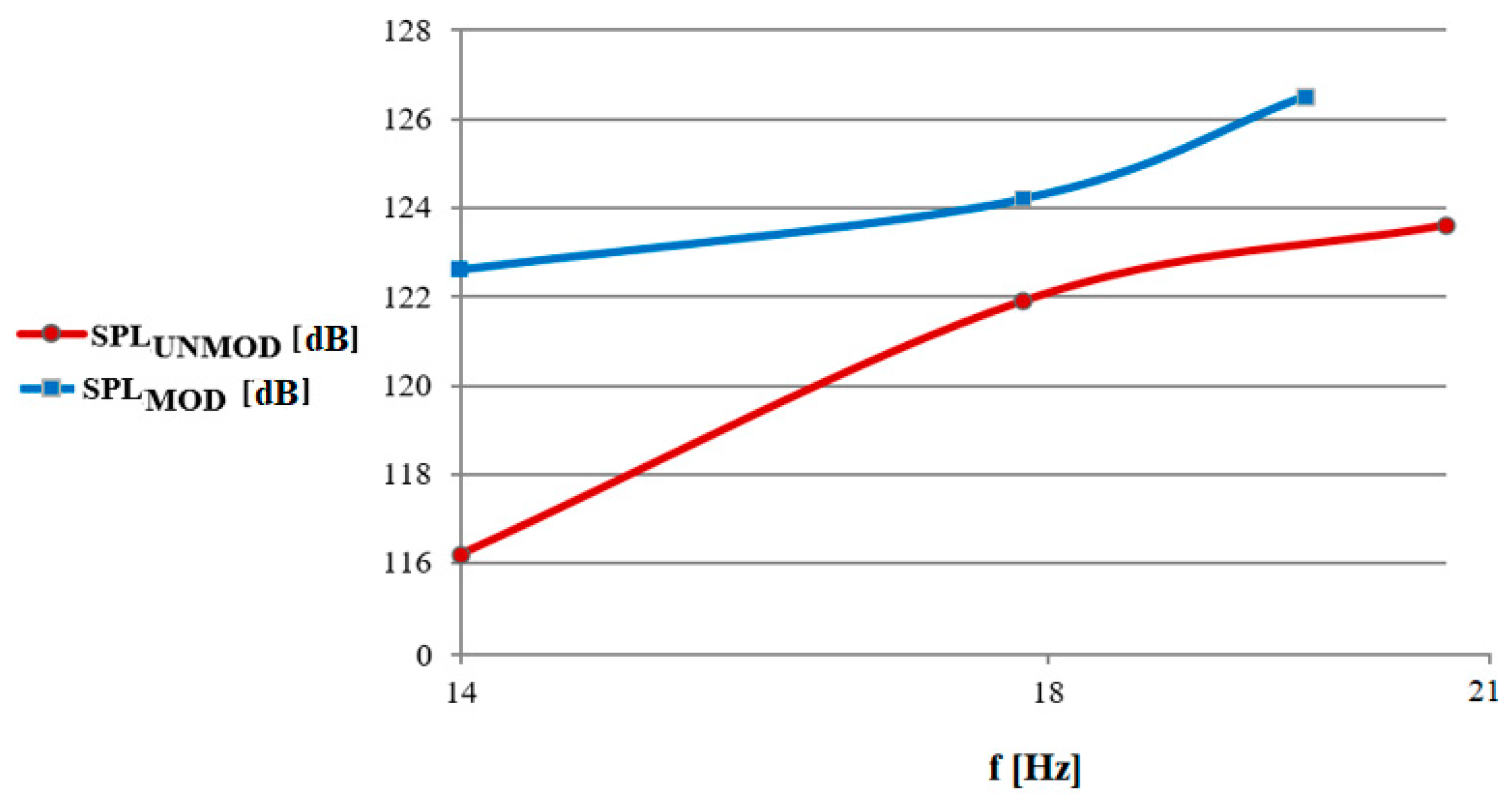Application of Low-Frequency Acoustic Waves to Extinguish Flames on the Basis of Selected Experimental Attempts
Abstract
Featured Application
Abstract
1. Introduction
2. Materials and Methods
3. Results and Discussion
| f (Hz) | P (W) |
|---|---|
| 14 | 200 |
| 18 | 305 |
| 20 | 700 |
4. Conclusions
Author Contributions
Funding
Institutional Review Board Statement
Informed Consent Statement
Data Availability Statement
Acknowledgments
Conflicts of Interest
References
- Tomaskova, M.; Pokorny, J.; Kucera, P.; Balazikova, M.; Marasova, D., Jr. Fire Models as a Tool for Evaluation of Energy Balance in Burning Space Relating to Building Structures. Appl. Sci. 2022, 12, 2505. [Google Scholar] [CrossRef]
- Liu, Y.; Chen, R.; Guo, S.; Wang, Z.; Pan, R. Modification and Application Performance Study of Ultra-Fine Dry Powder Extinguishing Agent. Molecules 2024, 29, 3830. [Google Scholar] [CrossRef] [PubMed]
- Szydło, Z.A. History of Fire. Chem.-Didact.-Ecol.-Metrol. 2017, 24, 23–43. [Google Scholar] [CrossRef]
- Wilk-Jakubowski, J.L.; Loboichenko, V.; Wilk-Jakubowski, G.; Yılmaz-Atay, H.; Harabin, R.; Ciosmak, J.; Ivanov, S.; Stankov, S. Acoustic firefighting method on the basis of European research: A review. Akustika 2023, 46, 31–45. [Google Scholar] [CrossRef]
- Mainzer, K. Renewable Energy and Sustainable Digitalisation: Challenges for Europe. Chem.-Didact.-Ecol.-Metrol. 2022, 27, 5–23. [Google Scholar] [CrossRef]
- De Luna, R.G.; Baylon, Z.A.P.; Garcia, C.A.D.; Huevos, J.R.G.; Ilagan, J.L.S.; Rocha, M.J.T. A Comparative Analysis of Machine Learning Approaches for Sound Wave Flame Extinction System Towards Environmental Friendly Fire Suppression. In Proceedings of the IEEE Region 10 Conference (TENCON 2023), Chiang Mai, Thailand, 31 October–3 November 2023. [Google Scholar] [CrossRef]
- Gelfert, S. Novel Mobile Robot Concept for Human Detection in Fire Smoke Indoor Environments using Deep Learning. In Proceedings of the 8th International Conference on Robotics and Artificial Intelligence (ICRAI 2022), Singapore, 18–20 November 2022. [Google Scholar] [CrossRef]
- Janků, P.; Komínková–Oplatková, Z.; Dulík, T. Fire detection in video stream by using simple artificial neural network. Mendel 2018, 24, 55–60. [Google Scholar] [CrossRef]
- Szegedy, C.; Toshev, A.; Erhan, D. Deep Neural Networks for Object Detection. Available online: https://papers.nips.cc/paper/2013/hash/f7cade80b7cc92b991cf4d2806d6bd78-Abstract.html (accessed on 1 December 2023).
- Sai, R.T.; Sharma, G. Sonic Fire Extinguisher. Pramana Res. J. 2017, 8, 337–346. [Google Scholar]
- Foley, D.; O’Reilly, R. An Evaluation of Convolutional Neural Network Models for Object Detection in Images on Low-End Devices. In Proceedings of the 26th AIAI Irish Conference on Artificial Intelligence and Cognitive Science, Dublin, Ireland, 6–7 December 2018; Available online: http://ceur-ws.org/Vol-2259/aics_32.pdf (accessed on 5 September 2024).
- Semerak, M.; Pozdeev, S.; Yakovchuk, R.; Nekora, O.; Sviatkevych, O. Mathematical modeling of thermal fire effect on tanks with oil products. MATEC Web Conf. 2018, 247, 40. [Google Scholar] [CrossRef]
- Vasiliev, M.; Movchan, I.; Koval, O. Diminishing of ecological risk via optimization of fire-extinguishing system projects in timber-yards. Nauk. Visnyk Natsionalnoho Hirnychoho Universytetu 2014, 5, 106–113. Available online: https://www.proquest.com/openview/56ed16b1da9e20b586c7fe015779fed7/1?pq-origsite=gscholar&cbl=1886336 (accessed on 5 December 2023).
- Abramov, Y.; Basmanov, O.; Salamov, J.; Mikhayluk, A.; Yashchenko, O. Developing a model of tank cooling by water jets from hydraulic monitors under conditions of fire. East.-Eur. J. Enterp. Technol. 2019, 1, 14–20. [Google Scholar] [CrossRef]
- Abramov, Y.; Kalchenko, Y.; Liashevska, O. Determination of dynamic characteristics of heat fire detectors. EUREKA Phys. Eng. 2019, 3, 50–59. [Google Scholar] [CrossRef]
- Tiwari, R.G.; Agarwal, A.K.; Jindal, R.K.; Singh, A. Experimental Evaluation of Boosting Algorithms for Fuel Flame Extinguishment with Acoustic Wave. In Proceedings of the International Conference on Innovation and Intelligence for Informatics, Computing, and Technologies (3ICT), Sakheer, Bahrain, 20–21 November 2022. [Google Scholar] [CrossRef]
- Li, Q.; Li, Z.; Chen, R.; Zhang, Z.; Ge, H.; Zhou, X.; Pan, R. Numerical study on effects of pipeline geometric parameters on release characteristics of gas extinguishing agent. Symmetry 2021, 13, 1766. [Google Scholar] [CrossRef]
- Abramov, Y.; Basmanov, O.; Salamov, J.; Mikhayluk, A. Model of thermal effect of fire within a dike on the oil tank. Nauk. Visnyk Natsionalnoho Hirnychoho Universytetu 2018, 2, 95–100. [Google Scholar] [CrossRef]
- Pospelov, B.; Andronov, V.; Rybka, E.; Skliarov, S. Research into dynamics of setting the threshold and a probability of ignition detection by self-adjusting fire detectors. East.-Eur. J. Enterp. Technol. 2017, 5, 43–48. [Google Scholar] [CrossRef]
- Wilk-Jakubowski, G.; Harabin, R.; Ivanov, S. Robotics in crisis management: A review. Technol. Soc. 2022, 68, 101935. [Google Scholar] [CrossRef]
- Rabajczyk, A.; Zielecka, M.; Gniazdowska, J. Application of Nanotechnology in Extinguishing Agents. Materials 2022, 15, 8876. [Google Scholar] [CrossRef]
- Kozlov, V.V.; Grek, G.R.; Korobeinichev, O.P.; Litvinenko, Y.A.; Shmakov, A.G. Combustion of hydrogen in round and plane microjets in transverse acoustic field at small Reynolds numbers as compared to propane combustion in the same conditions. Int. J. Hydrogen Energy 2016, 41, 20231–20239. [Google Scholar] [CrossRef]
- Karimi, N. Response of a conical, laminar premixed flame to low amplitude acoustic forcing—A comparison between experiment and kinematic theories. Energy 2014, 78, 490–500. [Google Scholar] [CrossRef][Green Version]
- Im, H.G.; Law, C.K.; Axelbaum, R.L. Opening of the Burke-Schumann Flame Tip and the Effects of Curvature on Diffusion Flame Extinction. Proc. Combust. Inst. 1990, 23, 551–558. [Google Scholar] [CrossRef]
- Kornilov, V.N.; Schreel, K.; De Goey, L.P.H. Experimental assessment of the acoustic response of laminar premixed Bunsen flames. Proc. Combust. Inst. 2007, 31, 1239–1246. [Google Scholar] [CrossRef]
- Magina, N.; Steele, W.; Emerson, B.; Lieuwen, T. Spatio-temporal evolution of harmonic disturbances on laminar, non-premixed flames: Measurements and analysis. Combust. Flame 2016, 180, 262–275. [Google Scholar] [CrossRef]
- Chen, L.W.; Zhang, Y. Experimental observation of the nonlinear coupling of flame flow and acoustic wave. Flow Meas. Instrum. 2015, 46, 12–17. [Google Scholar] [CrossRef][Green Version]
- Andronov, V.; Pospelov, B.; Rybka, E.; Skliarov, S. Examining the learning fire detectors under real conditions of application. East. -Eur. J. Enterp. Technol. 2017, 3, 53–59. [Google Scholar] [CrossRef]
- Kashinath, K.; Waugh, I.C.; Juniper, M.P. Nonlinear self-excited thermoacoustic oscillations of a ducted premixed flame: Bifurcations and routes to chaos. J. Fluid Mech. 2014, 761, 399–430. [Google Scholar] [CrossRef]
- Yilmaz Atay, G.; Loboichenko, V.; Wilk-Jakubowski, J.Ł. Investigation of calcite and huntite/hydromagnesite mineral in co-presence regarding flame retardant and mechanical properties of wood composites. Cem. Lime Concr. 2024, 29, 40–53. [Google Scholar] [CrossRef]
- Loboichenko, V.; Wilk-Jakubowski, J.; Wilk-Jakubowski, G.; Harabin, R.; Shevchenko, R.; Strelets, V.; Levterov, A.; Soshinskiy, A.; Tregub, N.; Antoshkin, O. The Use of Acoustic Effects for the Prevention and Elimination of Fires as an Element of Modern Environmental Technologies. Environ. Clim. Technol. 2022, 26, 319–330. [Google Scholar] [CrossRef]
- Buček, P.; Maršolek, P.; Bílek, J. Low-Cost Sensors for Air Quality Monitoring—The Current State of the Technology and a Use Overview. Chem.-Didact.-Ecol.-Metrol. 2021, 26, 41–54. [Google Scholar] [CrossRef]
- Pérez, Y.; Pastor, E.; Planas, E.; Plucinski, M.; Gould, J. Computing forest fires aerial suppression effectiveness by IR monitoring. Fire Saf. J. 2011, 46, 2–8. [Google Scholar] [CrossRef]
- Tempest, W. Infrasound and Low Frequency Vibration; Academic Press Inc.: London, UK, 1976. [Google Scholar]
- Olson, H.F. Music, Physics and Engineering; Dover Publications Inc.: Mineola, NY, USA, 2003. [Google Scholar]
- Wilk-Jakubowski, J.; Stawczyk, P.; Ivanov, S.; Stankov, S. Control of acoustic extinguisher with Deep Neural Networks for fire detection. Elektron. Ir Elektrotechnika 2022, 28, 52–59. [Google Scholar] [CrossRef]
- Levterow, A.; Statyvka, E. Визначення параметрів акустичнoгo приладу екіпірування рятувальників (Determination of parameters of an acoustic device for rescuers’ equipment). Probl. Emerg. Situat. 2022, 1, 280–295. [Google Scholar] [CrossRef]
- Azarenko, O.; Honcharenko, Y.; Divizinyuk, M.; Mirnenko, V.; Strilets, V.; Wilk-Jakubowski, J.L. The influence of air environment properties on the solution of applied problems of capturing speech information in the open terrain. J. Sci. Pap. Soc. Dev. Secur. 2022, 12, 64–77. [Google Scholar] [CrossRef]
- Yi, E.Y.; Lee, E.; Bae, M.J. A study on the directionality of sound fire extinguisher in electric fire. Converg. Res. Lett. Multimed. Serv. Converg. Art Humanit. Sociol. 2017, 3, 1449–1452. [Google Scholar]
- Bong-Young, K.; Myung-Jin, B.; Seong-Geon, B. A Study on a Suitability of Sound Fire Extinguisher in Duct Environment. Int. J. Appl. Eng. Res. 2017, 12, 15796–15800. Available online: https://www.ripublication.com/ijaer17/ijaerv12n24_256.pdf (accessed on 8 January 2024).
- Taspinar, Y.S.; Koklu, M.; Altin, M. Classification of flame extinction based on acoustic oscillations using artificial intelligence methods. Case Stud. Therm. Eng. 2021, 28, 101561. [Google Scholar] [CrossRef]
- Fegade, R.; Rai, K.; Dalvi, S. Extinguishing Fire Using Low Frequency, Sound from Subwoofer. Gradiva Rev. J. 2022, 8, 708–713. Available online: https://drive.google.com/file/d/1GCby0jQmMFxLL5yH71XlqQeKui3tYBje/view (accessed on 8 January 2024).
- Yadav, R.; Shirazi, R.; Choudhary, A.; Yadav, S.; Raghuvanshi, R. Designing of Fire Extinguisher Based on Sound Waves. Int. J. Eng. Adv. Technol. 2020, 9, 927–930. Available online: https://www.ijeat.org/wp-content/uploads/papers/v9i4/D7301049420.pdf (accessed on 8 January 2024). [CrossRef]
- Ferreira, A.; Figueiredo, M. Boosting Algorithms: A Review of Methods, Theory, and Applications. In Ensemble Machine Learning; Zhang, C., Ma, Y., Eds.; Springer: New York, NY, USA, 2012. [Google Scholar] [CrossRef]
- Sharma, D.; Sharma, B.; Mantri, A.; Goyal, N.; Singla, N. Dhwani Fire: Aerial System for Extinguishing Fire. ECS Trans. 2022, 107, 10295–10301. [Google Scholar] [CrossRef]
- Wilk-Jakubowski, J. Analysis of Flame Suppression Capabilities Using Low-Frequency Acoustic Waves and Frequency Sweeping Techniques. Symmetry 2021, 13, 1299. [Google Scholar] [CrossRef]
- Stawczyk, P.; Wilk-Jakubowski, J. Non-invasive attempts to extinguish flames with the use of high-power acoustic extinguisher. Open Eng. 2021, 11, 349–355. [Google Scholar] [CrossRef]
- Vovchuk, T.S.; Wilk-Jakubowski, J.Ł.; Telelim, V.M.; Loboichenko, V.M.; Shevchenko, R.I.; Shevchenko, O.S.; Tregub, N.S. Investigation of the use of the acoustic effect in extinguishing fires of oil and petroleum products. SOCAR Proc. 2021, 2, 24–31. [Google Scholar] [CrossRef]
- Defense Advanced Research Projects Agency. DARPA Sound Based Fire Extinguisher. Available online: https://www.extremetech.com/extreme/132859-darpa-creates-sound-based-fire-extinguisher (accessed on 12 May 2024).
- Ohta, M.; Ogawa, H. A note on identifying a transmission factor in room acoustics. Arch. Acoust. 2005, 30, 323–331. [Google Scholar]
- Sulimov, S.I.; Chernigovskikh, I.V.; Cherenkov, R.A.; Chernykh, V.D.; Vasiliev, B.V. Civilization and its environmental consequences. Chem.-Didact.-Ecol.-Metrol. 2021, 26, 31–40. [Google Scholar] [CrossRef]
- Chomać-Pierzecka, E.; Sobczak, A.; Urbańczyk, E. RES Market Development and Public Awareness of the Economic and Environmental Dimension of the Energy Transformation in Poland and Lithuania. Energies 2022, 15, 5461. [Google Scholar] [CrossRef]
- Awae, F.; Chareonmark, P.; Tapanapongpan, P.; Wongwises, S.; Trinuruk, P. Experimental Investigation on the Optimal Frequency for Acoustic Fire Extinguishing in Different Duct Configurations. In Proceedings of the 3th TSME International Conference on Mechanical Engineering, Chiang Mai, Thailand, 12–15 December 2023; Available online: https://kirim.kmutt.ac.th/converis/portal/detail/Publication/1470062716?lang=en_GB (accessed on 13 May 2024).
- Gao, Y.; Zhao, Y.; Wang, T. Preparation and Characterization of Chitosan/Hydroxypropyl Methylcellulose Temperature-Sensitive Hydrogel Containing Inorganic Salts for Forest Fire Suppression. Gels 2024, 10, 390. [Google Scholar] [CrossRef] [PubMed]
- Taspinar, Y.S.; Koklu, M.; Altin, M. Fire detection in images using framework based on image processing, motion detection and convolutional neural network. Int. J. Intell. Syst. Appl. Eng. 2021, 9, 171–177. [Google Scholar] [CrossRef]
- Koklu, M.; Taspinar, Y.S. Determining the extinguishing status of fuel flames with sound wave by machine learning methods. IEEE Access 2021, 9, 207–216. [Google Scholar] [CrossRef]
- Sarker, B.; Gupta, S.; Singh, G.; Kumar, P.; Maiti, J. Explainable AI-Driven Machine Learning Approach for Prediction of Acoustic-Based Fire Extinction. In Proceedings of the 4th International Conference on Data Analytics for Business and Industry (ICDABI), Sakheer, Bahrain, 25–26 October 2023. [Google Scholar] [CrossRef]
- Jin, J.; Kim, S.; Moon, J. Development of a Firefighting Drone for Constructing Fire-breaks to Suppress Nascent Low-Intensity Fires. Appl. Sci. 2024, 14, 1652. [Google Scholar] [CrossRef]
- Hui, T.; Xin, Y.; Haojie, L.; Chaoyu, T.; Huajie, B. An Electrical Fire Detection Scheme Based on Current Frequency Domain Characteristics. In Proceedings of the International Conference on Distributed Computing and Optimization Techniques (ICDCOT), Bengaluru, India, 15–16 March 2024. [Google Scholar] [CrossRef]
- Khan, N.; Ali, A.K.; Van-Tien Tran, S.; Lee, D.; Park, C. Visual Language-Aided Construction Fire Safety Planning Approach in Building Information Modeling. Appl. Sci. 2020, 10, 1704. [Google Scholar] [CrossRef]





| f [Hz] | SPL [dB] |
|---|---|
| 14 | 116.2 |
| 18 | 121.9 |
| 21 | 123.6 |
| f [Hz] | SPL [dB] |
|---|---|
| 14 | 122.6 |
| 18 | 124.2 |
| 20 | 126.5 |
| f [Hz] | P [W] |
|---|---|
| 14 | 125 |
| 18 | 155 |
| 21 | 345 |
Disclaimer/Publisher’s Note: The statements, opinions and data contained in all publications are solely those of the individual author(s) and contributor(s) and not of MDPI and/or the editor(s). MDPI and/or the editor(s) disclaim responsibility for any injury to people or property resulting from any ideas, methods, instructions or products referred to in the content. |
© 2024 by the authors. Licensee MDPI, Basel, Switzerland. This article is an open access article distributed under the terms and conditions of the Creative Commons Attribution (CC BY) license (https://creativecommons.org/licenses/by/4.0/).
Share and Cite
Loboichenko, V.; Wilk-Jakubowski, G.; Wilk-Jakubowski, J.L.; Ciosmak, J. Application of Low-Frequency Acoustic Waves to Extinguish Flames on the Basis of Selected Experimental Attempts. Appl. Sci. 2024, 14, 8872. https://doi.org/10.3390/app14198872
Loboichenko V, Wilk-Jakubowski G, Wilk-Jakubowski JL, Ciosmak J. Application of Low-Frequency Acoustic Waves to Extinguish Flames on the Basis of Selected Experimental Attempts. Applied Sciences. 2024; 14(19):8872. https://doi.org/10.3390/app14198872
Chicago/Turabian StyleLoboichenko, Valentyna, Grzegorz Wilk-Jakubowski, Jacek Lukasz Wilk-Jakubowski, and Jozef Ciosmak. 2024. "Application of Low-Frequency Acoustic Waves to Extinguish Flames on the Basis of Selected Experimental Attempts" Applied Sciences 14, no. 19: 8872. https://doi.org/10.3390/app14198872
APA StyleLoboichenko, V., Wilk-Jakubowski, G., Wilk-Jakubowski, J. L., & Ciosmak, J. (2024). Application of Low-Frequency Acoustic Waves to Extinguish Flames on the Basis of Selected Experimental Attempts. Applied Sciences, 14(19), 8872. https://doi.org/10.3390/app14198872






